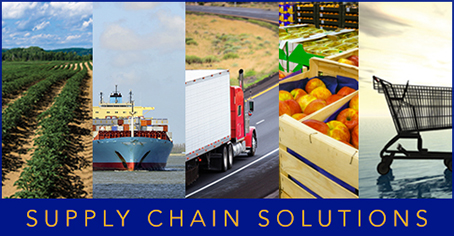An important tactic for ensuring product availability is to establish secondary sources of supply for primary commodities. In the case of a demand surge not covered by a contract or a supply chain disruption at your primary supplier, a fallback plan is needed. A properly vetted backup supplier can provide enough product to fulfill short-term inventory requirements.
“If the primary supplier doesn’t have the goods needed to meet demand, then I’m calling trusted secondary suppliers who can meet product specifications and deliver in a reasonable amount of time—while protecting my cost model as much as possible,” Watson says.
Fernandez notes that Sun Rich is pursuing local vendors to create a buffer stock of needed commodities. “The local distributive model becomes more relevant as forecasts and weather patterns change versus prior years. You can tap into it when needed to fulfill additional demand,” he adds.
Another responsive strategy is to adjust inventory allocations. Postponing product distribution will generate a more accurate picture of customer quantity and location requirements. Reallocating inventory among customer orders helps with demand spikes and slumps. Both tactics require transportation flexibility, timeliness, and proper handling to maximize product shelf life and sales.
“If we see a drop in volume, we reach out to our vendors,” points out Fernandez. “Before they put product onto a vessel, we may reassign it to other customers. If it’s already on its way, we can try to redirect the product to another customer or one of our other facilities.”
As a last resort, it may be necessary to go to the open market. When inventories are tight, brokers will charge whatever the market will bear. Watson notes that in critical situations such as a major promotion, some buyers will decide to take the financial hit to obtain the product needed to serve customers. And when excess inventories exist and product must be moved before it expires, selling to a processor, offering a deep discount to wholesalers, or working with a food bank can avoid a total loss.
Summary
Achieving a workable balance between supply and demand does not occur spontaneously. Instead, there must be deliberate and sustained efforts to understand the causes of supply-demand imbalances and to minimize their frequency and severity.
Growers, processors, and retailers must embark upon a joint initiative to align production output with marketplace requirements. Proactive strategies involving collaboration, inventory control, and segmentation will sidestep some challenges. Responsive strategies involving secondary suppliers and inventory reallocation can minimize the direct impact of unavoidable disruptions. Collectively, these efforts will help fresh produce supply chains converge on inventory levels that would please Goldilocks—not too much and not too little, but just right.



